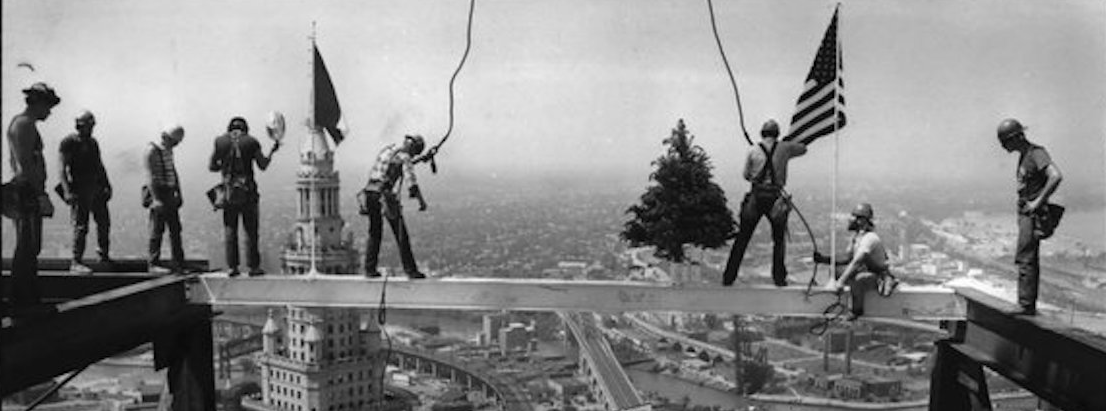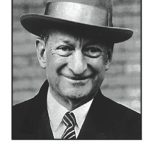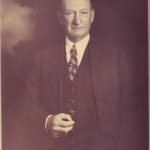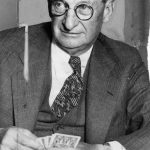Category: City Managers Political Bosses 1920’s
Video from “Charles Waddell Chesnutt: The Civic Life of a Cleveland Creative” A talk by Regennia N. Williams, PhD Tues Feb 16, 2021 at 7pm
The video is here:
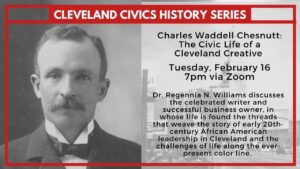
TUESDAY, FEBRUARY 16, 2021 AT 7 PM EST
Charles Waddell Chesnutt: The Civic Life of a Cleveland Creative
A talk by Regennia N. Williams, PhD
Zoom RSVP here:
https://cwru.zoom.us/webinar/register/WN_AUVj1jvvT6Ock1GE0xW9cA
In the life and work of Charles Waddell Chesnutt (June 20, 1858 – November 15, 1932), we find the threads that weave together much of the story of early twentieth-century African American leadership in Cleveland and many of the challenges associated with living life along the ever-present color line. A celebrated writer and successful business owner, Chesnutt was also known for his activism and reform efforts. This presentation will consider both his literary life and his work in civic affairs, from the turn of the century through the “New Negro Movement” of the 1920s.
Regennia N. Williams, PhD Distinguished Scholar of African American History and Culture, Cleveland History Center
Cosponsored by Cleveland History Center, League of Women Voters of Greater Cleveland and CWRU Siegal Lifelong Learning
Garrett Morgan Was A Renaissance Man by Vince Guerrieri, Cleveland Magazine 12/1/2021

The Ku Klux Klan in Northeast Ohio: The Crusade of White Supremacy in the 1920s by by Steve Viglio
The Ku Klux Klan in Northeast Ohio: The Crusade of White Supremacy in the 1920s
by Steve Viglio
The link is here
If that link does not work, try this
Masters Thesis
YOUNGSTOWN STATE UNIVERSITY August, 2021
CLEVELAND’S ENDEARING SYMBOL: 52 STORIES OF THE TERMINAL TOWER
CLEVELAND’S ENDEARING SYMBOL: 52 STORIES OF THE TERMINAL TOWER
The link to the book is here
Curated and designed by Bill Barrow and Donna Stewart, originators of the Cleveland Memory Project at Cleveland State University’s Michael Schwartz Library, the exhibit drew on that library’s Special Collections, but it also featured newly created artworks and video, and material from a remarkable array of community partners, including
- the Cleveland Museum of Art
- IdeaStream
- the Cleveland Museum of Natural History
- the Cleveland International Film Festival
- the Rock Hall
- the Tower City archives, and even
- the late lamented Cleveland Pickle Company.
No dry, dusty museum piece, the exhibition was an affectionate and informative look at the role of the tower in the life of the city.
Police Roundup of Chinese in Cleveland in 1925: A Case Study of a Racist Measure and the Chinese Response
Police Roundup of Chinese in Cleveland in 1925: A Case Study of a Racist Measure and the Chinese Response
Ohio Historical Journal -2000
by Shirley Sui Ling Tam
The link is here
Jane Edna Hunter and Black Institution Building in Ohio by Virginia R. Boynton
Jane Edna Hunter and Black Institution Building in Ohio by Virginia R. Boynton
Google book link here
From: Builders of Ohio: A Biographical History
edited by Warren R. Van Tine, Michael Dale Pierce, Michael Cain Pierce
Meet William Stinchcomb, visionary behind creating the Cleveland Metroparks, video from Cleveland.com 7.20.2017
Meet William Stinchcomb, visionary behind creating the Cleveland Metroparks, video from Cleveland.com 7.20.2017
The Cleveland Metroparks will be celebrating its 100-year anniversary this weekend, so we thought it appropriate to share the history of one of the parks driving forces — William Stinchcomb.
Maurice Maschke aggregation
1 Maurice Maschke – The Gentleman Boss of Cleveland by Brent Larkin
2 Maurice Maschke from Philip W. Porter
4 The Death of Maurice Maschke
5 “Maurice Maschke Memoirs” Plain Dealer Series August, 1934
6 Maurice Maschke, a tribute written by Roelif Loveman, Plain Dealer (11/20/1936)
Miriam Kerruish (Stage) biography The National cyclopædia of American biography 1931
Miriam Kerruish (Stage) biography The National cyclopædia of American biography 1931
Here is more on Dr. Kerruish, from this article about her husband, Charles “Billy” Stage:
…This new direction may also have been the result of a change in his personal life that occurred when Stage married Miriam Kerruish on August 27, 1903. His new bride came from a background just as extraordinary as his own. Her father, William Kerruish, was the son of emigrants from the Isle of Man and proved such an excellent student that he was admitted to the sophomore class of Western Reserve College. As would be the case for his future son-in-law, money was tight so he worked his way through school “by making beds, sawing wood and doing anything else that he could find to do.”
Kerruish brought an infectious spirit and a strong social conscience to the campus. Although American-born, he took great pride in his heritage and taught his language teachers how to speak Gaelic. He also became deeply involved in the abolitionist movement and convinced his fellow students to invite Frederick Douglass to deliver a commencement address in 1854, a choice that stirred up considerable controversy. Kerruish then finished up his education at Yale — once again teaching the Gaelic language to his instructors — and returned to Cleveland to practice law. He became the head of one of the city’s best law firms and continued to practice law until his death at age ninety-six. He also found time to marry Margaret Quayle, an emigrant from the Isle of Man, and raise a large family.
Their daughter Miriam was born in Cleveland on November 7, 1870, and shared her father’s probing intellect and social conscience. After receiving a bachelor’s of arts degree from Smith College in 1892, Miriam enrolled at Wooster Medical College and graduated in 1895. She became the first female doctor ever to practice at Cleveland City Hospital, where she specialized in obstetrics and pediatrics.
Dr. Kerruish soon became convinced that poverty was responsible for the illnesses of many of the children she was treating. She emerged as a champion of child welfare, organizing the Women’s Protective Association of Cleveland and serving on the board of trustees of the Woman’s Hospital, the Maternity Hospital Council and many other noble causes. She also became active in the woman’s suffrage movement, starting the Cuyahoga County Woman’s Suffrage Party and spearheading its activities. In the midst of all these endeavors, she also found time to give birth to and raise four children — three boys and a girl.
—————————
Once her children were old enough, Miriam Stage returned to practicing medicine. She joined the staff of the Cleveland Clinic, a medical center formed upon novel principles. It was founded by Drs. George W. Crile, Frank E. Bunts, William E. Lower, and John Phillips, three of whom had served overseas during the First World War and been impressed by the benefits of having medical specialists from a variety of disciplines working together. While serving in France, Crile marveled in his journal: “What a remarkable record Bunts, Crile and Lower have had all these years. We have been rivals in everything, yet through all the vicissitudes of personal, financial and professional relations we have been able to think and act as a unit.” (Clough, 19)
Upon returning to Cleveland they decided to open a clinic based upon a similar cross-disciplinary, cooperative approach to medicine. Central to their mission was an emphasis on research and education, as the founders believed that patient care and teaching went hand in hand. As Crile’s son later described it, the clinic was based upon a shared ideal of “an institution in which medicine and surgery could be practiced, studied and taught by a group of associated specialists. To create it, the four founders began to plan an institution that would be greater than the sum of its parts.” (Clough, 32)
Their clinic at Euclid Avenue and East 93rd Street opened its doors in 1921 and three years later a 184-bed hospital began to admit patients. At the 1921 opening, Crile articulated the vision of the founders. One of the pinnacles was ongoing education that was not departmentalized as in a university but in which doctors communicated new findings tow one another through a schedule of daily conferences and lectures. This dialogue, Crile explained, was “not only our duty to the patient of today, but no less out duty to the patient of tomorrow.” Just as important was the commitment to ensuring that, “the patient with no means and the patient with moderate means may have at a cost he can afford as complete an investigation as the patient with ample means.” (Clough, 39-41) It is easy to see why the setting was a perfect fit for Miriam Stage and she became one of the leaders of the Clinic’s Women’s Hospital.
In 1929, tragedy struck the Cleveland Clinic. On May 15, nitrocellulose x-ray films overheated, causing at least two explosions and sending lethal fumes through the building. One hundred and twenty-three people lost their lives, including Dr. Miriam Stage.
Billy Stage never remarried. While he was still in mourning, the stock market crash brought an end to the Van Sweringens’ empire. He retired in 1939 and passed away on May 17, 1946, at the Cleveland Clinic where his wife had practiced and met her untimely death. His death occurred on the seventeenth anniversary of his wife’s funeral.
